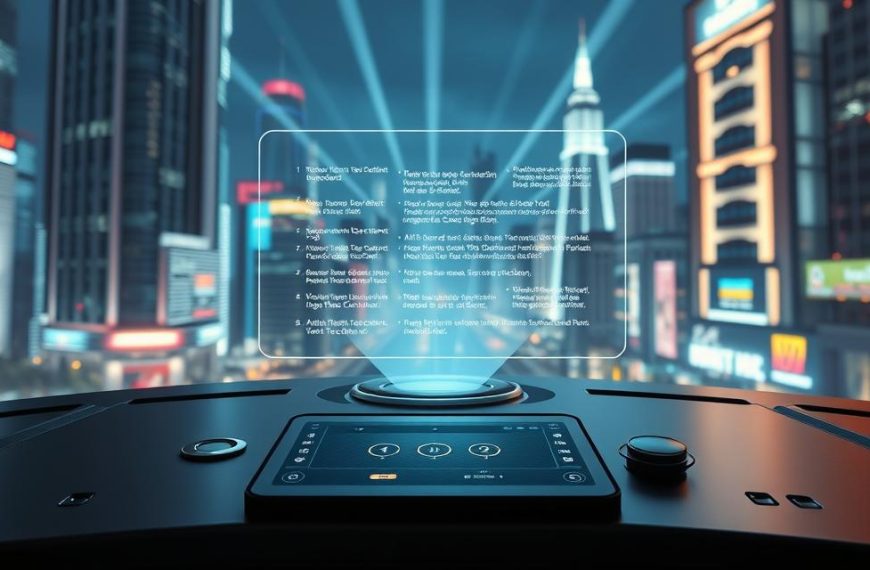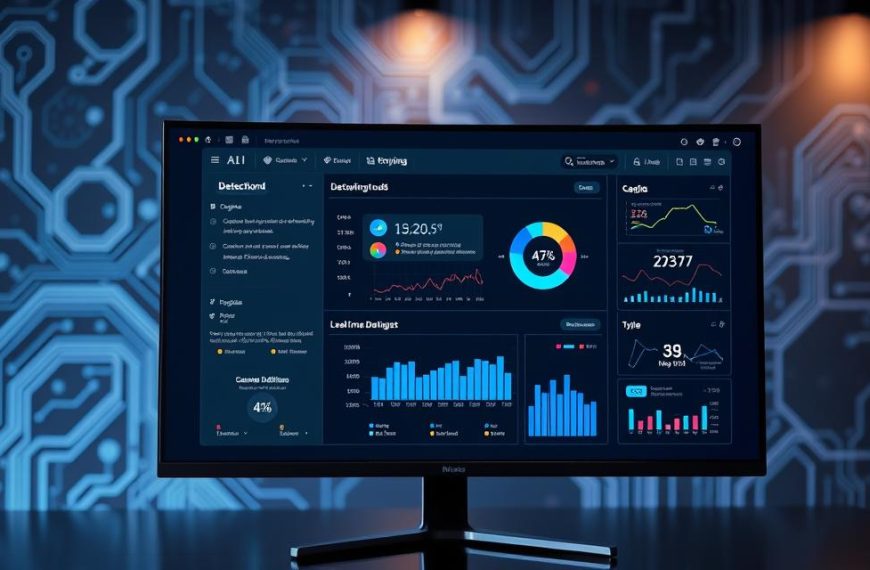The digital landscape is becoming increasingly complex, with the lines between human-written and AI-generated content blurring. As a result, distinguishing between the two has become a significant challenge.
AI detection tools have emerged to address this issue, utilising sophisticated algorithms to identify machine-written text with increasing accuracy. The importance of detecting AI-generated content cannot be overstated, as it is crucial for maintaining content authenticity and credibility.
This article will explore the key topics related to AI detection tools, including their features, applications, and limitations. By understanding the capabilities and constraints of these tools, readers will be better equipped to select the most suitable options for their specific needs.
The Rise of AI-Generated Content and Detection Needs
The proliferation of AI-generated content has created a pressing challenge for industries reliant on authentic writing. As AI writing models evolve to mimic human styles, tone, and creativity with increasing sophistication, the line between human and machine-generated content becomes increasingly blurred.
AI-generated material can sometimes be misrepresented as human-written, which is particularly problematic in sensitive areas like journalism, academic publishing, and financial and medical advice, where authenticity and credibility are paramount.
Why AI Content Detection Matters Today
The significance of AI content detection lies in its ability to maintain trust and authenticity in critical sectors. With AI models capable of producing content that is often indistinguishable from that written by humans, the need for reliable detection methods has become more pressing.
The Growing Challenge of Distinguishing Human vs. Machine Writing
The challenge of distinguishing between human and machine-generated content is multifaceted. Key factors include the analysis of linguistic patterns and characteristics unique to AI-generated text, the technical hurdles in developing robust detection algorithms, and the ongoing “arms race” between AI content generation and detection technologies.
| Industry | Challenge | Detection Need |
|---|---|---|
| Journalism | Maintaining authenticity | High |
| Academic Publishing | Ensuring originality | High |
| Creative Writing | Preserving human creativity | Medium |
Understanding AI Generator Checker Technology
Understanding how AI generator checkers work requires delving into the intricacies of their detection models and algorithms. These tools are designed to identify content generated by AI models, and their effectiveness relies on sophisticated methodologies.
How AI Detection Algorithms Function
AI detection algorithms function by analyzing text at multiple levels, from macro-level structures to micro-level linguistic patterns. Our AI detection model includes several components that work together to determine the origin of the text and whether it was written by AI. This multi-stage approach optimizes accuracy while minimizing false positives and negatives.
DeepAnalyse™ and Other Detection Methodologies
DeepAnalyse™ Technology is a comprehensive deep learning methodology trained on extensive text collections from the internet, educational datasets, and proprietary synthetic AI datasets. It specializes in identifying AI-generated content from models like Chat GPT, GPT3, GPT5, Gemini, and LLaMa. Other detection methodologies also employ specialized techniques to identify content from specific AI models, highlighting the importance of diverse and robust training datasets.
Key Benefits of Using AI Content Detection Tools
AI content detection tools offer numerous benefits across various industries, enhancing the authenticity and credibility of content. These tools are crucial in various professional settings, providing a robust solution to verify content integrity.
Maintaining Content Authenticity and Credibility
The primary function of AI content detection tools is to maintain the authenticity of digital content. By identifying AI-generated content, these tools help organizations uphold their credibility and trustworthiness in the eyes of their audience.
Supporting Academic Integrity
In academic settings, AI content detection tools play a vital role in supporting academic integrity. They assist educational institutions in detecting and preventing plagiarism, thereby promoting original work and research.
Ensuring Compliance in Professional Settings
AI content detectors can be particularly helpful in law and compliance settings by analyzing language patterns and compliance-related phrases. This capability improves the accuracy and reliability of legal documents, reducing potential legal risks associated with non-compliant content. Effective detection tools support regulatory compliance in industries with strict content standards.
Top AI Generator Checker Tools in 2023
As AI-generated content continues to grow, it’s crucial to examine the leading detection tools that can help maintain content authenticity.
ZeroGPT: Advanced Multi-Language Detection
ZeroGPT stands out for its advanced multi-language detection capabilities, making it a versatile tool for identifying AI-generated content across different languages. Its sophisticated algorithms enable it to detect subtle patterns in text that may indicate AI generation.
GPTZero: Comprehensive Model Coverage
GPTZero is notable for its comprehensive coverage of various AI models, ensuring that it can detect content generated by a wide range of AI tools. This makes it a valuable resource for those needing to verify the authenticity of content.
Surfer AI Detector: User-Friendly Interface
Surfer AI Detector is praised for its user-friendly interface, making it accessible to non-technical users. It simplifies the AI detection process by allowing users to simply paste their text for analysis, highlighting sections that may be AI-generated.
Surfer’s tool not only detects AI-generated content but also provides suggestions for refining the content to enhance its authenticity and originality. This is particularly useful for content creators looking to ensure their work is genuine.
Features to Look for in an Effective AI Content Detector
To maximise the utility of an AI generator checker, it’s essential to evaluate its core features. An effective tool should possess a combination of advanced functionalities that enhance its performance and usability.
Accuracy and Reliability Metrics
The accuracy of an AI content detection tool is paramount. Look for tools that provide clear metrics on their detection accuracy and reliability. This includes understanding the algorithms used and the confidence levels associated with the detection results.
Language Support Capabilities
Many AI detectors can identify both human-written content and AI-refined content across multiple languages. When selecting a tool, consider its language support capabilities to ensure it meets your needs, especially if you work with content in different linguistic contexts.
Integration Options and Reporting Features
Integration with popular platforms like Google Docs and Microsoft Word can significantly streamline the content detection process. Additionally, robust reporting features help users understand the detection results, making it easier to take corrective actions when necessary.
How AI Generator Checkers Work in Practice
The practical application of AI Generator Checkers involves a nuanced understanding of their functionality. These tools are designed to analyze content and determine its origin, whether human-written or AI-generated.
The Text Analysis Process
The text analysis process involves complex algorithms that scrutinize the content for patterns and characteristics indicative of AI generation. This process is crucial for accurate detection.
Key aspects of the analysis include linguistic pattern recognition and stylistic feature identification. These elements help in distinguishing between human and AI-generated content.
Understanding Probability Scores and Results
The probability score assigned by AI Generator Checkers, such as Surfer’s AI detector, indicates the likelihood that the content was created using AI models. A higher score suggests AI-generated content, while lower scores indicate human-written content.
| Score Range | Interpretation |
|---|---|
| 0-30 | Likely human-written |
| 31-70 | Ambiguous; may require further analysis |
| 71-100 | Likely AI-generated |
Understanding these scores is essential for interpreting the results effectively.
Common Applications for AI Content Detection
AI content detection has numerous applications across various industries, enhancing the authenticity and reliability of content. As AI-generated content becomes more prevalent, the need for effective detection tools grows.
Educational Institutions and Academic Publishing
In educational settings, AI content detectors help maintain academic integrity by identifying potential instances of plagiarism or AI-generated content. This ensures that academic work remains authentic and credible.
Content Creation and Digital Marketing
For content creators and digital marketers, AI detection tools verify the originality of content, helping to maintain credibility and trust with their audiences. This is particularly important in industries where content authenticity is paramount.
Legal and Compliance Verification
In legal and compliance settings, AI content detectors analyze language patterns and compliance-related phrases to identify potential risks and non-compliant content. This improves the accuracy and reliability of legal documents, supporting compliance and verification processes within organizations.
Limitations and Challenges of Current AI Detection Tools
While AI detection tools are useful, they are not perfect and face several challenges that need to be overcome. The technology is still evolving, and its accuracy varies depending on the sophistication of the algorithms and the quality of the datasets used for training.
False Positives and Accuracy Concerns
One of the significant challenges faced by AI detectors is the issue of false positives. This occurs when human-written content is incorrectly identified as being generated by AI writing tools. Ensuring the accuracy of detection is crucial for maintaining trust in these systems.
Keeping Pace with Evolving AI Writing Technology
As AI writing models become more advanced, detectors must continuously adapt to keep pace. This “arms race” between AI generation and detection technology requires ongoing research and development to maintain effectiveness.
| Challenge | Impact | Required Solution |
|---|---|---|
| False Positives | Incorrect identification of human-written content | Improved algorithm accuracy |
| Evolving AI Models | Detection tools becoming outdated | Continuous updates and training on new AI models |
Best Practices for Using AI Generator Checkers
To get the most out of AI content detection tools, organisations must adopt a nuanced approach that combines technological and human assessment. Effective utilisation of these tools requires a comprehensive understanding of their capabilities and limitations.
Interpreting Results Correctly
AI content detectors provide probability scores indicating the likelihood that a piece of content was generated by AI. It’s crucial to understand that these scores are not definitive and should be considered in context. Human oversight is necessary to ensure that the results are correctly interpreted, especially in nuanced or complex contexts.
Combining AI Detection with Human Review
While AI detection tools are effective for initial screening, human review is essential for making informed decisions. By combining AI detection with human assessment, organisations can leverage the strengths of both approaches. This hybrid approach enables a more accurate and comprehensive evaluation of content, particularly in situations where context is critical.
Conclusion: The Future of AI Content Detection
As we navigate the complexities of AI-generated content, the importance of reliable detection technology cannot be overstated. By promoting the use of AI detector tools and encouraging original writing, we can maintain the quality and credibility of online content. Future developments in AI detection will likely focus on improving accuracy and keeping pace with evolving AI writing technology, driving further research in this field.



















